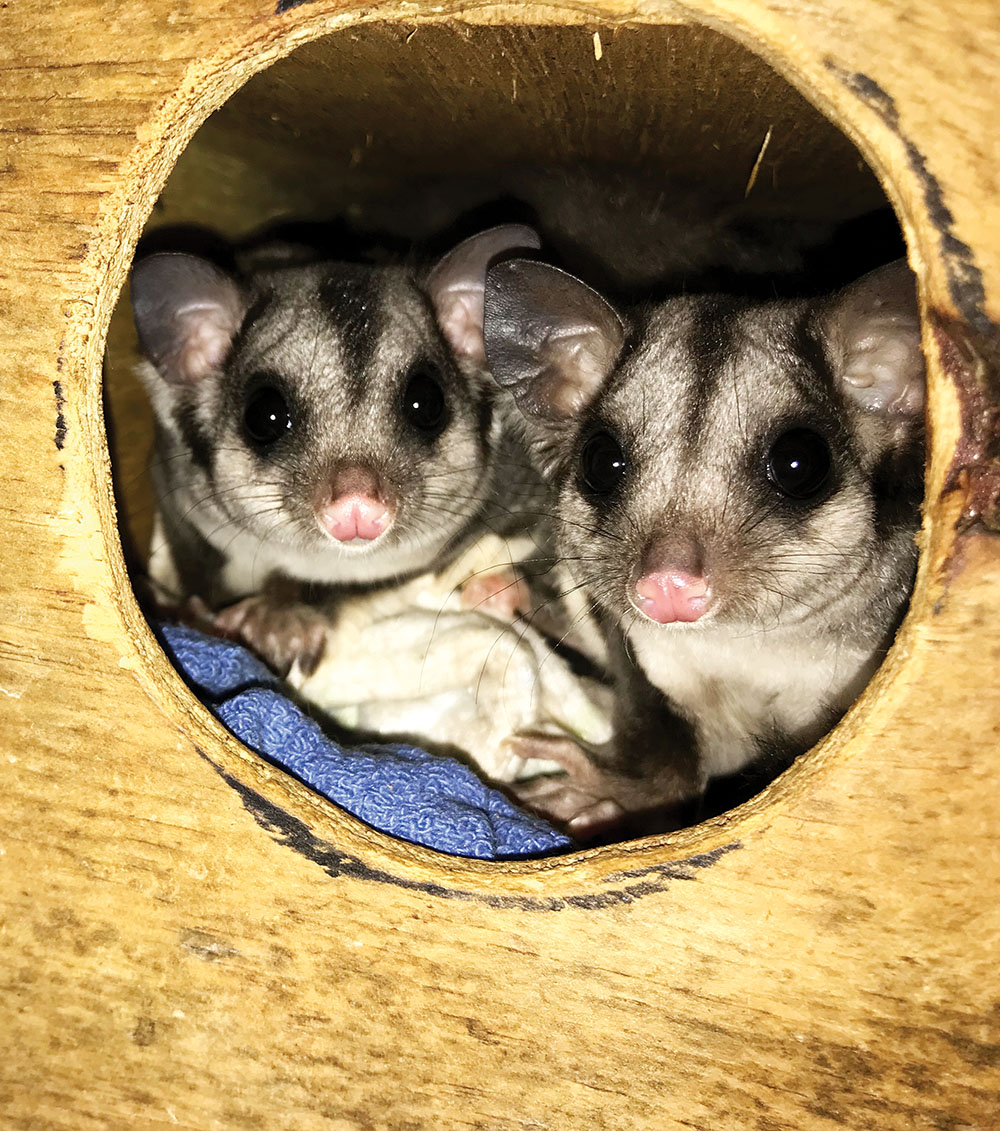The Sugar and Squirrel Gliders
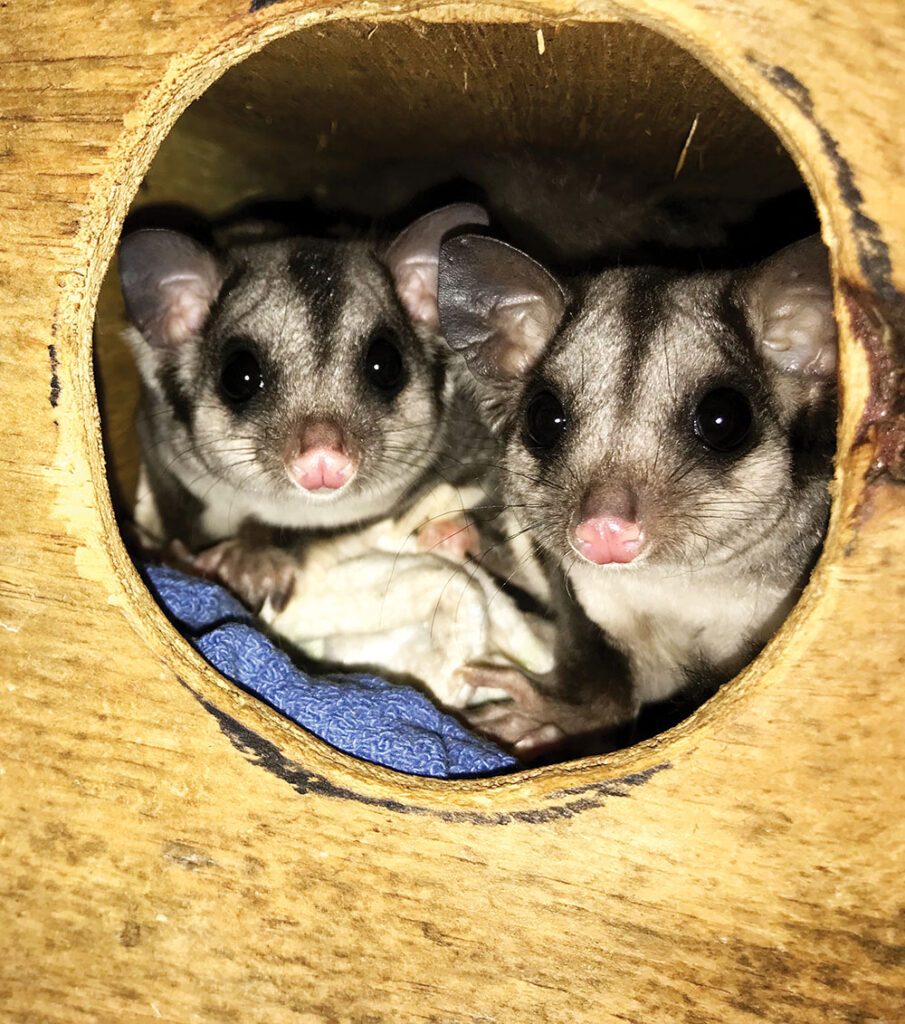
Both or these Gliders live on and around the Mountain and are more commonly seen than the larger Gliders Species. They are hard to tell apart from a distance but they live in completely different habitat to each other.
The Sugar Glider is a smaller build, weighing 100-150g with a short snout which gives them a pug like look. They are found at higher altitudes and prefer wetter, denser forest habitat. These Gliders are more commonly found on Tamborine Mountain and Springbrook. Their vocalisations vary from a soft yapping sound like a dog barking in the distance to a rumbling or gurgling sound when they are defensive. If you have ever heard it, it is quite startling.
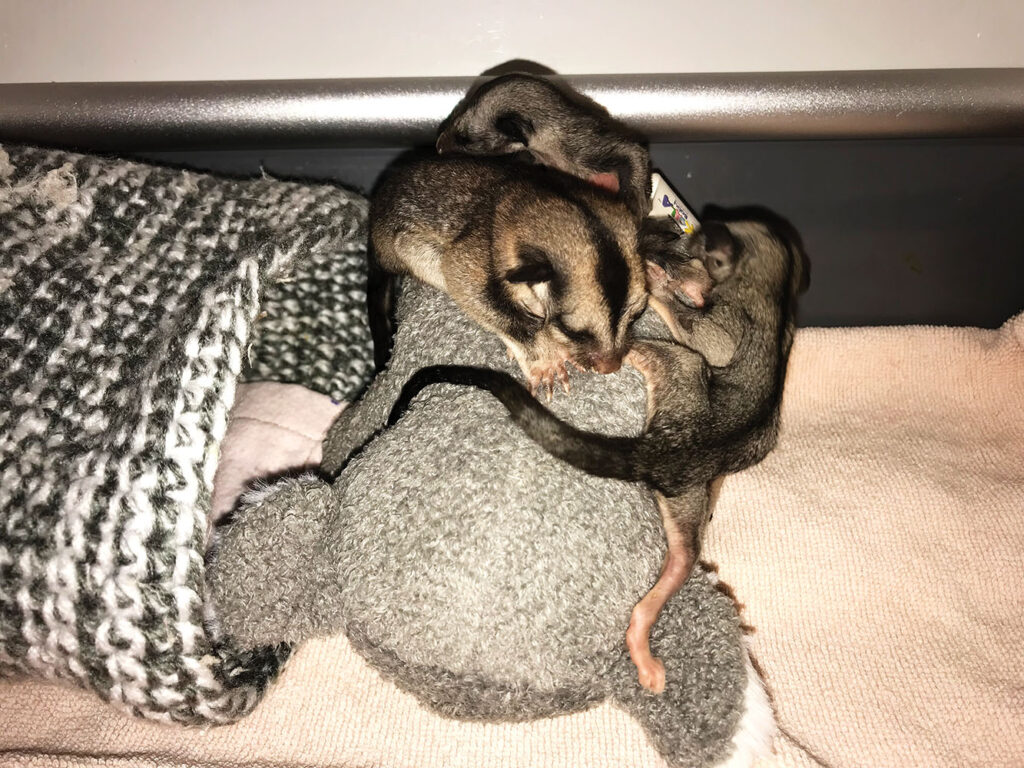
The larger Squirrel Glider weighs 200-300g, has a longer face with a more pointed nose. Their preferred habitat is low land open forests and need tall trees to glide between.
The calls of the Squirrel Glider vary also and include a soft grunt and a gurgling chatter.
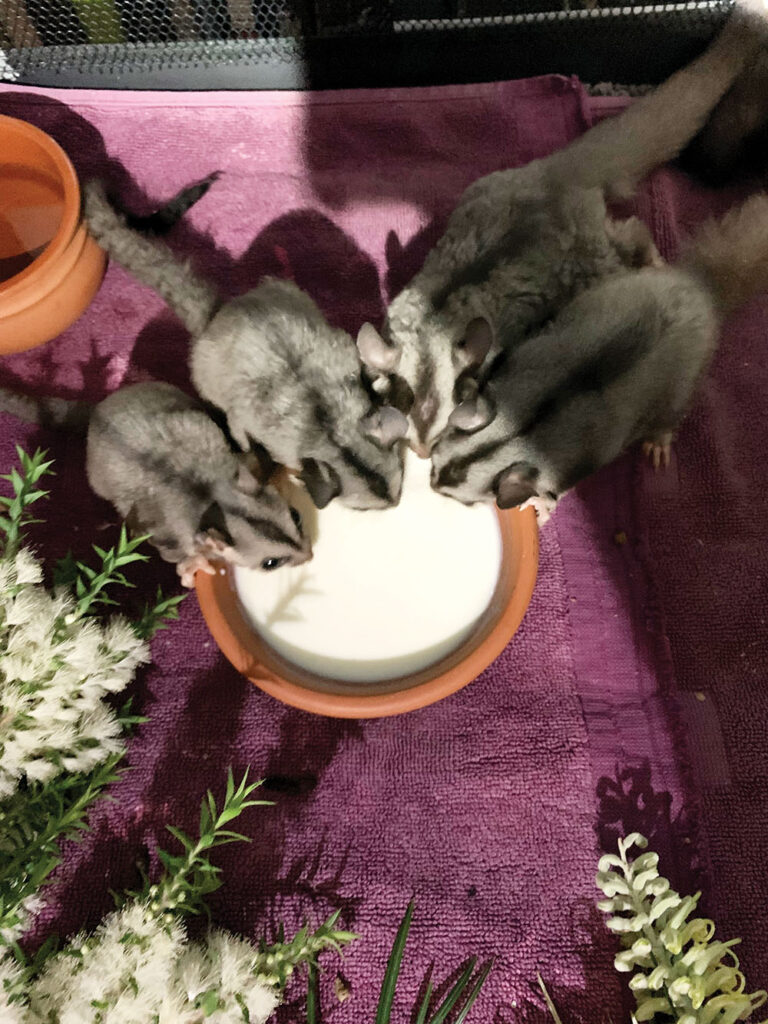
The diet of both species is similar, consisting of insects, nectar, pollen and sap or gum from Eucalyptus and Acacia trees. Both species have the unique ability to puncture tree bark with their 2 large lower incisors in order to allow sap to flow from the tree. This feature is also the reason they must be handled carefully as they have an extremely strong bite which I found out the hard way with my first Glider rescue!
Like all our Gliders, they are nocturnal, arboreal and rely on dense bush corridors and old growth trees with hollows in which to shelter in their family groups and to raise their young.
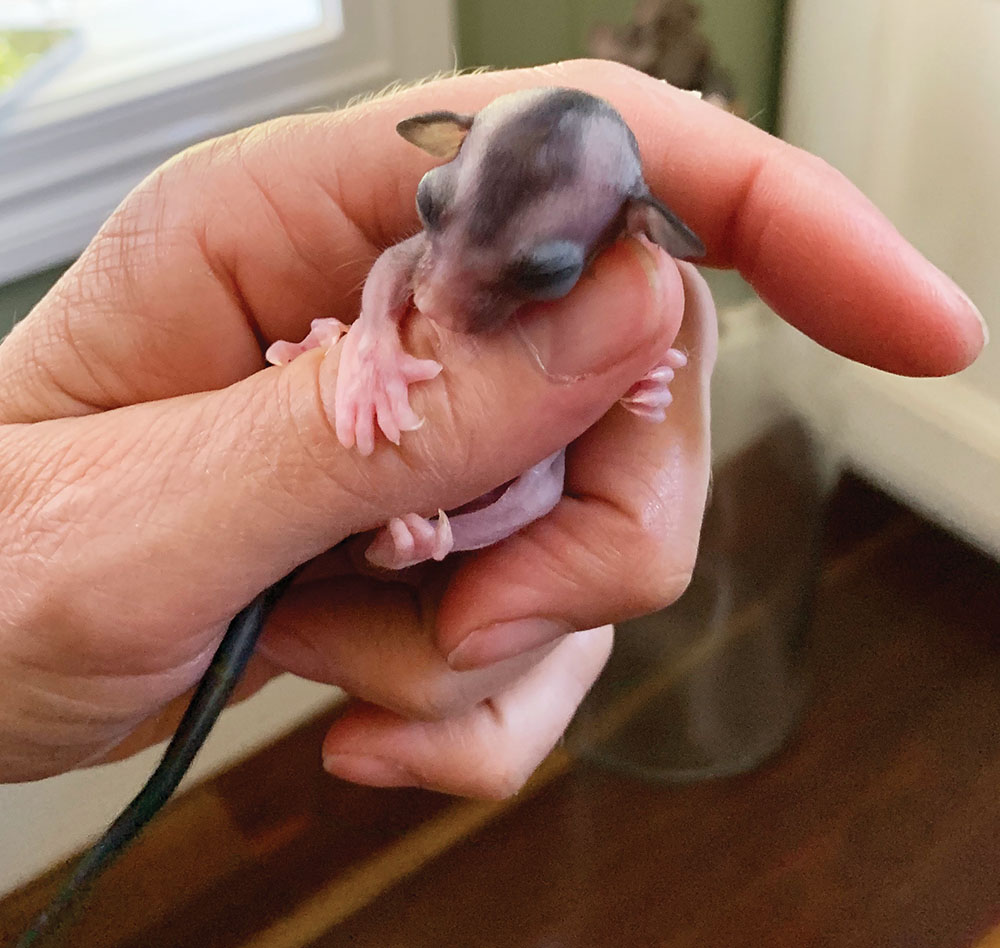
HOW CAN YOU HELP?
- Allow tall trees to remain and plant more native trees to create corridors for Gliders to travel through without having to come to ground.
- Put up glider boxes as a housing alternative.
- Keep Cats and Dogs in at night when our Marsupials are out and about.
- If your cat does escape and brings in a Glider please call a Wildlife group for help. This is the most common reason we rescue Gliders and after being in a Cats mouth they need antibiotic treatment due to the strong bacteria that all Cats have in their saliva.
- The Scenic Rim Council has a large Wildlife Corridor project going which involves working with property owners in Glider habitat to conduct surveys and assist with planting of native trees. Look up scenicrim.wildlife.org.au/projects
If you find a sick or injured animal call:
Wildcare Hotline 5527 2444
RSPCA 1300animal
By Sherryn Fraser
(Qualified Vet Nurse)
Registered Wildlife
Rescuer and Rehabilitator
Wildcare.org.au
